
Digital transformation
in the modern law firm
PRESENTS




1.
Ensuring a
good working experience...
from anywhere
The onset of 2020 saw ten years of digital transformation in just ten months. Priorities of the CIO were accelerated, abandoned and adjusted. Questions cycled from ‘how will we rapidly enable remote working?’ to ‘what will the return to work be like?’.
With an initiative list turned on its head, many IT leaders in the legal sector are still scrambling to manage the competing priorities of cloud migrations, implementation of SASE and zero trust, adoption of Microsoft365, upgraded security investments and more – while also trying to ensure the best possible user experience for remote workers. This paper is designed to explore more about the most common and important projects being undertaken at the modern law firm, helping you chart your own roadmap in tandem with trends in the legal IT industry.
Traditionally most, although not all, law firms operated on a primarily fixed basis. Sat behind a desk, working on company-assigned devices and connected to IT-managed networks. Tools to facilitate remote working were broadly seen as necessary but not critical. A VPN could be used for the rare instances an employee needed to work from home, for example. As the workplace changed, however, these technologies began to show signs of inadequacy. Even pre-COVID, the number of legal professionals working outside the office was growing fast. That extends beyond gradually more liberal work-from-home policies; the train, the airport and the café have also increasingly featured as a venue for work in recent years.
Survey: Share of legal professionals accessing services on mobile devices
Consider the following frustrations:
Legal professionals were asked in early 2020 whether they used mobile devices (Android and iOS) to conduct their work. More than four in five used one for at least email, with most also using video conferencing on the go. No more than a third used mobile for document management, cloud storage or other more complex tasks, suggesting that while the mentality of ‘work from anywhere’ was in place, the systems and processes were not suitable for full-fledged mobile working.
One of the most difficult challenges for IT has always been the disparity between remote workers (including those on mobile) and traditional working. Distributed workforces need access to the same tools and support that fixed workers do, but IT typically doesn’t have the visibility, diagnostics, security or technologies in place to be able to help them. Ultimately, the end user experience of working outside the office is significantly degraded.
A poor user experience can have a meaningful impact. Frustrated employees are far more likely to leave, and productivity can take a big hit when the experience is inadequate. Given that many law firms bill in small increments – often just six minutes – this can have a measurable impact upon the bottom line.
These are a small selection of the most common frustrations facing employees that are amplified when working from anywhere. Even if each issue results in a conservative one minute of lost productivity per day, that quickly becomes 30 minutes per week. At typical lawyer rates, that is $175 in lost billable minutes, or more than $8000 a year per fee earner. Improving the employee experience means improving the bottom line. It’s no surprise that IT leaders listed improving the end user experience as their top priority for the future more than any other initiative.
• Microsoft Teams or Zoom call audio/video issues
• Having to regularly reauthenticate with MFA throughout the day
• Struggling with slow network performance
• Frequent network disconnects
• Application crashes
• Failure to access cloud resources
Survey: Number one IT priority for 2021 at law firms
Moving to the cloud and adopting zero trust are both colossal and important undertakings, but more law firms are primarily focused on improving end user experience than those two projects combined.
Research on the employee experience (EX) in mid-2020 reveals that while two in three remote workers encountered an IT issue in lockdown, over half (57%) didn’t even report it to their IT team. This lack of visibility into experience issues is one of most difficult challenges facing the modern law firm, meaning helpdesk tickets and reactive support will not go far enough in improving the EX. This problem is compounded by the fact that most law firms do nothing to proactively monitor the EX - the same research showed that 58% do not monitor the end user experience at all, making establishing a baseline almost impossible.

Survey: What would make the single biggest difference to the experience of remote fee earners?
So how can the employee experience be improved if so much is still unknown? Many law firms are turning to dedicated experience monitoring tools, gathering telemetry data to better diagnose issues as they emerge. Some of these technologies also allow for the aggregate analysis of the experience problems encountered by remote workers, allowing for administrators to flag common issues and remediate at scale – whether that is upgrading a particular device type, migrating from a legacy app to a modern alternative or applying new network policies.
When IT leaders at law firms were asked to share the type of issue that they believed would make the biggest improvement to the EX, the most frequently cited was network performance (47%). Employees could have the best software with the least obtrusive security, yet if the underlying network is unreliable then the entire effort is rendered meaningless. The network has never been more important, so ensuring high performance is crucial.
Video
conferencing
Document
management
Note taking/
annotation
Cloud storage
Practise
management
system
Refresh your device state
Other
Upgrade remote connectivity
Adopt zero trust (ZTNA/SDP)
Move to the cloud
Enhance user experience
“When people start to get back on the move – in cars, showrooms, coffee shops, client meeting rooms – we might see some of the legacy technology come under strain.”
Jonathan Swan, Operations & IT Director
Roythornes
“The user experience at home needs to be just as consistent and just as seamless as going into the office."
Andrew Yearsley, CTO
Bishop Fleming
“There will need to be more digitalization to support ‘working from anywhere.’ I have doubts about current tech stacks, and whether they can meet the demands of the ‘working from anywhere’ model. The market is in need of additional tools to make that user experience what they expect it to be.”
Jas Bassi, Head of Solution Delivery
Gately Legal
“The best secure access tools – both VPNs and ZTNAs – will actively improve the quality of the network. Modern security software can reduce latency and optimize the connection, so it’s imperative that law firms start to swiftly move away from legacy solutions that degrade the network and, in turn, the lawyer experience”
Nick Hayne, Head of Professional Services
Quiss

2.
Case study:
Brennan Manna
Diamond
Brennan Manna Diamond (BMD) is an entrepreneurial, pro-business law firm with eight offices in Ohio, Florida and Arizona. It focuses on providing solutions for individuals and businesses of all sizes, across a wide variety of industry sectors, nationwide.
As the firm moved towards the cloud and a more distributed way of working, it desperately needed to upgrade its legacy VPN solution. Attorneys and staff needed to access critical office resources but were frequently complaining about complicated login requirements and were experiencing regular disruptions. BMD needed technology that would allow attorneys to maintain flawless connectivity with clients, no matter where they work.
It turned to NetMotion to significantly reduce these user experience issues and help keep remote workers secure – connecting them to the resources they needed, both in the cloud and on-premise. The firm’s IT director, Danny Wyszynski, put it simply: “Our remote users don’t notice NetMotion on their laptops, and that’s a good thing – it just runs in the background and keeps them connected to our network.” Having already placed a strong focus on delivering a high-quality attorney experience, regardless of location, it meant that when the pandemic hit in 2020, the IT team at BMD was already prepared.
Replacing its legacy VPN with NetMotion came with a number of benefits. BMD enabled an ‘office-like’ experience for users while working remotely, simplified distribution of security updates to the workforce and significantly reduced internal helpdesk calls. A win for employee experience was a win for the business.
“After the first week or so, it was business as usual, which speaks volumes for NetMotion and the way it worked for us. We’re one of the only law firms in the area that didn’t encounter a dip in revenue or performance at the onset of the lockdown.”
Danny Wyszynski, IT Director
Brennan Manna Diamond
3.
Visibility into
the distributed
workforce
With lawyers and attorneys working from their homes and elsewhere, IT no longer enjoys the same level of insight. When an employee is connected to the corporate network and sat behind a desk, administrators can see the sites, applications, activities and issues in real-time, boosting both productivity and security overall. This ‘blind spot’ for remote workers was previously accepted as an edge case in the relatively rare instance of those not able to work in the office. More recently, however, this lack of visibility is a major problem as illustrated by data from a 2020 study, which revealed that 64% of IT leaders are dissatisfied with their level of visibility into remote workers. In another 2020 poll, IT professionals at law firms were asked to share which data they would like to see more of to address the blind spot.
While visibility into potential security concerns was a prominent issue, respondents were in general most likely to list experience (or diagnostics on problems) as the foremost area that leaders wanted more visibility into. Six months after this initial survey, respondents were asked a similar question. Results were largely unchanged, with experience and troubleshooting outranking security and acceptable usage as the most sought-after data – suggesting that the extended pandemic restrictions have not dampened IT appetite for improving the remote user experience.
Initial survey: What areas of remote working would you like more visibility into?
Six months later: Which areas of remote access visibility interest you most?
Although visibility into user experience is the top priority, understanding more about the threats and compliance risks facing distributed employees is also important. With fee earners operating on a variety of unknown, unmanaged and often insecure networks, security teams have struggled to ensure the same level of risk in the new normal. Without the protection of secure web gateways, firewalls and other perimeter-based security, remote workers are exposed to far more risk than fixed workers. Almost half of IT leaders consider remote workers to be exposed to either high or extremely high risk. The overall picture is unmistakable – a full 97% believe that remote workers are exposed to greater risk than traditional office workers.
What’s clear is that it’s unclear. There remains a large blind spot when it comes to the distributed workforce in the modern law firm, with experience and security both major concerns – technology must evolve to grant increased visibility into remote working, helping IT teams achieve parity across both employee experience and security, no matter where they work.
Issues encountered, diagnostics
Visibility into threats
End-user experience insights
Sites, apps and data usage
Application usage by employee
Issues encountered, diagnostics
Traffic outside the VPN tunnel
Risk/threat detection via network traffic

4.
Securing fee earners in the new normal
Pre-2020, most law firms operated a policy of working from home being the exception, reserved for rare cases or specific employees. Using a VPN was the typical solution for these instances, with some small usability compromises considered acceptable costs to ensure security and productivity.
After a rapid period of digital transformation, the new working environment is entirely different. It’s more mobile than ever, more cloud than ever and more distributed than ever. With more – if not most – employees working outside the fortified center of the enterprise, the trade-offs made for distributed workers pose a much bigger problem. Why should employees need constantly authenticate and connect to the company network just to satisfy security requirements? The migration of applications to the cloud has compounded this, with legacy network security products performing complex and unnecessary network gymnastics to secure the connections – often needlessly routed through the corporate perimeter. The legacy tools used for securing workers, like SWGs, VPNs and firewalls, no longer make sense in a world where connecting to the corporate network is the exception rather than the rule. Enter the Secure Access Service Edge (SASE).
Survey: Percentage of IT professionals that can confidently describe the principles of SASE
The benefits of SASE
Investing in zero trust and SASE in general will likely be a crucial component in the IT/security roadmap over the coming years. Law firms that can recalibrate their technologies to the reality of the modern working environment will significantly improve the end user experience and reduce the attack surface, keeping the organization secure and fee earners happy, safe and productive.
SASE, pronounced ‘sassy’, is a term that was coined by Gartner in The Future of Network Security Is in the Cloud, published at the end of Summer 2019. Although it’s tempting to think of it as a product category, like a firewall or a CASB, it’s more accurate to consider it more like a framework or philosophy. SASE encompasses a package of technologies, delivered as a service, that are designed to support the secure access needs of modern organizations. There is no fixed list of technologies that are or are not included within SASE, though many are frequently cited as examples of tools matching the philosophy. Andrew Lerner, a VP Analyst at Gartner, suggests that SD-WAN, SWG, CASB, ZTNA and FWaaS comprise the core abilities. Law firms, however, may select any number of SASE technologies and begin implementing the most relevant solutions for their organization. SASE places a heavy focus at the edge, securing users locally when possible and routing traffic in the most efficient way possible. It also embraces the idea of zero trust, using context-aware policy conditions to grant access on a ‘deny by default’ basis.
Legal professionals are engaging with SASE much faster than other sectors; familiarity with the concept is higher among law firms than any other vertical. It’s also more likely to be driven by IT teams than in other industries, with 66% of SASE strategies at law firms being led by IT, compared with a global average of just 53%. It’s no surprise that adoption of SASE in the legal sector is outpacing the average too. Around 14% of law firms claim to have implemented SASE already – almost twice as likely as those in other sectors. Fewer than 1 in 5 law firms have made no plans to adopt SASE at all (19%), much lower than the global average of 29%.
Survey: How would you describe your organization’s approach with SASE?
Adoption of SASE among law firms is partly a consequence of cloud migration. Cloud VPNs and cloud SWGs, both considered a part of the SASE framework, are the most popular technologies. Approximately 56% of law firms have already deployed a cloud VPN, with 60% making use of a cloud SWG. More nascent product categories such as ZTNA and CASB are growing fast but are currently still only being used by more innovative firms: around 1 in 6 have implemented these cutting-edge technologies so far at 16% (CASB) and 12% (ZTNA), which is comparable to adoption in other industries.
Reduced complexity
Fewer appliances to maintain
and agents to deploy, equating to fewer dollars spent
Performance improvements
Latency is reduced and
connectivity is optimized, without network gymnastics
Ease of use and transparency
Simple solutions that are
invisible to the end-user, with minimal intrusions
Improved security
Adoption of zero trust risk
posture and a reduced attack surface
Low operational overhead
Provides the ability to scale
without infrastructure administration
Centralized policy and local enforcement
Decision-making at the edge
without traffic hairpinning
Other sectors
Legal
SASE [sassy]
Secure access service edge

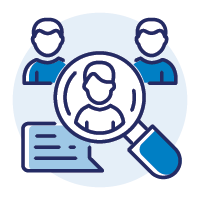

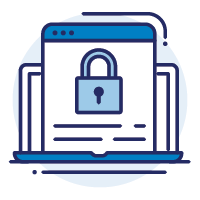

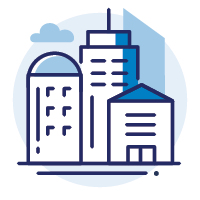
5.
The march
to the cloud
As well as the shift to distributed working, there has been a long transition to the cloud – both of which were accelerated by the pandemic. This move to the cloud, typically a combination of both SaaS and IaaS, is dismantling the traditional perimeter even further.
From document management and CRM to Microsoft Teams and SharePoint, an ever-increasing number of organizations are looking to cloud-delivered software. The march to the cloud is happening at a faster pace in the legal sector than elsewhere. Using data from a survey of more than 750 IT professionals in the UK, US, Australia, Germany and Japan in January 2021, roughly 1 in 20 law firms claim to be entirely operating in the cloud in 2021, more than double the rate of other sectors.
Survey: Share of organizations that operate 100% in the cloud
Guidance for Microsoft 365 support
Only 12% of law firms still have more than three-quarters of core applications hosted on-premise, although less than half (44%) have managed to migrate the majority of their resources to the cloud. While the most innovative law firms lead the way in cloud migration plans, the gap between the laggards and leaders is small in the legal sector than any other – suggesting a close community and shared best practice compared with other verticals. The research also revealed the weighted average value for migrating to the cloud is 49% for law firms, suggesting around half of all infrastructure has been migrated in the typical law firm.
The question being asked among senior figures in the legal sector is whether the objective is to ever reach 100% cloud. Speaking in April 2021, a group of 120 US law firms were asked to share their own progress and plans with the cloud. This data put the transition as slightly further ahead than the study in January, with a full 10% claiming to be operating entirely in the cloud – though the consensus confirms the average progress at about the midway point. Many participants countered the argument that the end goal was to be full-cloud, with several suggesting that the end goal was a hybrid and that they would ‘never be entirely cloud-based’.
A large component in almost every law firm’s cloud strategy is Microsoft365 (jokingly referred to in the Australian legal sector as Microsoft360 in reference to the frequent outages in 2021). A colossal 94% of law firms claim to be using Microsoft365 solutions, with projects such as Teams rollouts, Intune migrations and standardization on OneDrive all featuring prominently in priorities for 2021 among law firms.
Moving to cloud filesharing like SharePoint
Look to ZTNA, SDP, CASB, SASE and other modern approaches to cloud security. With more data accessible in the cloud and users dispersed across thousands of networks, upgrading your secure access philosophy away from the perimeter is an important component when adopting cloud storage solutions from Microsoft.
Embracing Microsoft Teams
Teams is undoubtedly a new and better way to collaborate with colleagues, especially in a distributed working environment. The challenge in ensuring a successful implementation is that video and audio quality can be unreliable. IT can no longer deliver network quality, given that many employees are in their homes or elsewhere. IT leaders should consider connectivity technology that stabilizes and improves the performance of networks to overcome some of these concerns.
Switching to Intune/Endpoint Manager
There is a compelling financial reason to migrate away from dedicated UEM like VMware or MobileIron to Microsoft’s offering included in M365. For some organizations, however, the functionality of Intune is less complete than with the products already in use – the limited VPN and remote access capabilities are regularly highlighted. Microsoft recommends using integrated dedicated solutions in tandem with Intune to meet those requirements. You can read more about this here.
Survey: How far along would you describe your cloud journey?

5%
Legal sector

2%
Other sectors
“We’re trying to figure out the best way to migrate from our existing tools like MobileIron and Skype to ensure we’re making the most of our Microsoft 365 licenses”
Senior IT director
New Jersey-based law firm
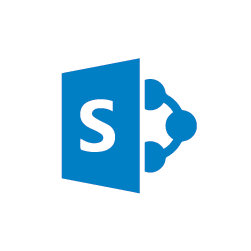





6.
Case study: Osbourne
Clarke
Osborne Clarke is an award-winning International legal practice, with offices situated around Europe, Asia, and the USA. The firm boasts over 270 partners and more than 900 lawyers in 25 locations. In a short space of time, Osborne Clarke rapidly scaled internationally and enabled all employees through their agile IT strategy and ‘Connected Working Policy’.
Its company-wide digital transformation strategy included enabling a robust work-from-anywhere policy, coupled with a migration to cloud-delivered applications. The plan was to support fee earners traveling, working remotely, commuting, and visiting clients - working from any location as securely and productively as if they were in the office.
In order to implement this ambitious plan Osborne Clarke’s IT team needed deeper visibility into how apps, networks and devices were being used; crucially without needing to backhaul all its traffic to the corporate network. Its existing VPN meant choosing between visibility and security (with tunneling) or a huge blind spot without it. By upgrading to NetMotion, it was able to retain a granular level of visibility and policy control for its growing remote workforce without needing to tunnel traffic. Now, when fee earners attempt to access cloud apps, the IT team can rely on zero trust policies to ensure they stay secure and allow them to access these resources directly without performing complex network gymnastics. This SASE-centric approach means that Osborne Clarke no longer needs to choose between visibility and experience, with traffic routed in the most efficient pathway without having to compromise.
The firm is now able to secure, monitor and control traffic flowing both inside and outside the VPN tunnel. This is helping them transition to the cloud in a flexible manner, as they split more cloud traffic out of the VPN. With increased visibility into distributed workers Osborne Clarke can now proactively and efficiently identify, diagnose and fix issues related to remote working, decreasing the meantime to resolution for support desk teams and reducing downtime for employees.
“We used to support 25 offices globally. With the shift to remote working due to the pandemic, we’re now effectively supporting 2000 offices globally. NetMotion’s offering is the perfect piece for us, as now we know exactly what’s going on. NetMotion instantly gives us real insight into the overall user experience.”
Myles Manning, client interface and solutions manager
Osbourne Clarke

7.
What now for
modern law firms?
There’s no doubt that 2020 was a monstrous year for those working in IT, networking or security in the legal sector and 2021 is no different. CIOs and their teams have a lot to think about, including improving the user experience, evolving network security stacks and migrating to the cloud. There is also the huge challenge of determining the return to work strategy. Will employees be expected to work from the office again? If so, how often and at what times? Navigating this complex new arena will be a challenge, and knowledge sharing between firms will be crucial in getting the policy right.
Law firms were asked in April 2021 about their preparations for life after COVID. The prevailing sentiment was that remote working is here to stay, with 35% planning to support remote working indefinitely and 45% considering a hybrid model.
Survey: By the end of 2021, how would you describe the nature of where work is done at your organization?
This flexibility is critical. Law firms overwhelmingly listed flexibility as the most significant factor in determining employee wellbeing, with over a third of law firms losing talent in the first quarter off 2021 alone. Providing an agile workplace is more than just an HR policy – it means providing the tools, technologies and processes that enable seamless working from anywhere. Using modern, innovative software on robust devices is a vital part in any flexible working agenda, meaning the alignment between IT and HR has never been more important.
The pathway ahead will be both exciting and difficult for legal IT. Leaders must be prepared for rapid change, embracing scalability and agility across every initiative. NetMotion should be considered to support a variety of projects, including:
• Significantly improving the employee experience for remote workers
• Increasing billable minutes for fee earners
• Upgrading secure access for zero trust and SASE frameworks
• Eliminating network problems and diagnosing remote worker IT issues
• Getting visibility into distributed workforces
• Supporting cloud migrations and M365 implementation
Fixed locations still the main place of work
Almost entirely remote/distributed
Majority of work that can be remote, will be
Balanced hybrid between fixed and remote
84%
Believe that flexibility is the single biggest influence on employee happiness at law firms
38%
Of law firms have involuntarily lost quality personnel in the first quarter of 2021
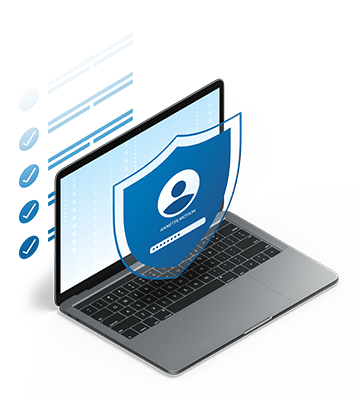
Appendix
Thank you to the law firms that participated in the NetMotion webinar series.
Adams and Reese, LLP
Addlesahw Goddard
Akerman LLP
Albertelli Law
Allen & Overy LLP
Allens
Allens LinkLaters
Anthony Collins Solicitors LLP
Appurity
Arthur J. Gallagher AU
Ashurst LLP
ATT Law
AustralianSuper
Avant Mutual
Aware Super
Baker Hostetler LLP
Baker McKenzie
Baker, Donelson, Bearman, Caldwell & Berkowitz, PC
BAL
Ballard Spahr
Barclay Damon LLP
Baskerville Drummond
Bass Berry and Sims
BCLP
Becker & Poliakoff
Bendett & McHugh
Benesch
Berliner Cohen, LLP
Bird & Bird
Blake Morgan LLP
Blanchards Bailey
Blank Rome LLP
BNZ
Bond Schoeneck & King
Bracewell
Bradley Arant Boult Cummings, LLP
Brennan, Manna & Diamond
Bridgeway Security Solutions Ltd
Brownstein
Bulley Davey Limited
Butzel Long , P.C.
Cains
Calcasieu Clerk of Court
Calfee, Halter & Griswold LLP
Cambridge Blue Square Management Ltd
Carpmaels & Ransford LLP
Cisilion
Clarion
Clarke Willmott LLP
Clausen Miller P.C.
Clayton Utz
Clyde & Co
CMC Networks
CMS
Coffin Mew LLP
ContractProbe
Corrs Chambers Westgarth
Cozen O'Connor
Cravath Swaine & Moore LLP
Crowell & Moring
DAS
David
Davis Graham & Stubbs
Dechert LLP
Defence Health
Dentons
Dewitt LLP
DGS
DLA Piper
Duane Morris
DWF LLP
Earthjustice
EBF
Edwards Duthie Shamash
Eimer Stahl LLP
ELTA
Enyo Law
FBD
Finnegan LLP
Fisher & Phillips LLP
Foley & Lardner, LLP
Forsters
Foster Garvey
Fox Rothschild LLP
Fragomens
Freshfields Deringer Bruchhaus
Gateley
Goldberg Segalla
Gordon & Rees, LLP
Gowling WLG UK
GST
Gunderson Dettmer
Hall & Wilcox
Hanna Brophy
Harbottle & Lewis
Harris Beach PLLC
Herbert Smith Freehills
HFW Australia
Hill Ward Henderson
Hinshaw & Culbertson LLP
Hogan Lovells
Holland & Knight
Horwich Farrelly
Howard Kennedy LLP
HSF
Hunton Andrews Kurth
Husch Blackwell
IBB Law LLP
International Legal Technology Association
IO
Irwin Mitchell
ITEC Connect Ltd.
Jackson Kelly
Jackson Lees
Jeremy Hyman Associates
Johnson Winter & Slattery
Jones Day
K&L Gates
Kanner and Pintaluga
Kegler, Brown, Hill & Ritter Co., L.P.A.
Kell, Alterman & Runstein, L.L.P.
Keystone law
King & Wood Mallesons
King and Spalding
Kirkland & Ellis LLP
Kuit Steinart Levy
L.A. Superior Court
Law Society of NSW
Law South Group Limited
Legal Aid Society
Linebarger
Linklaters
Loeb & Loeb LLP
Luther Law
MacFarlanes
Macpherson Kelley
Margolis Edelstein
Matheson
Mayer Brown
McCabe Curwood
McCullough Robertson Lawyers
McDermott Will & Emery
McInnes Wilson Lawyers
Memery Crystal
Messerli Kramer
Michelmores LLP
Milbank LLP
Miles and Stockbridge
Miller & Martin PLLC
Miller Johnson
Mills Oakley
MinterEllison
Travers Smith
Morgan, Lewis, and Bockius
Muckle LLP
NAB
Netrix
North P&I
Norton Rose Fulbright
Nutter McClennen & Fish LLP
Offit Kurman
Ogletree Deakins
Olenick
Orrick, Herrington & Sutcliffe
Osborne Clarke
Parsons Behle & Latimer
Paul Hastings
Paul Weiss
Pinsent Masons
Piper Alderman
PR minds
Preti Flaherty
Qolcom Limited
Quarles & Brady
Quiss Technology
QUMU
Reinhart Boerner Van Deuren
Roythornes Solicitors
RPC Tyche
RTWSA
Rubenstein Law
Russell Kennedy
Sackers LLP
Schnader Harrison Segal & Lewis LLP
Seyfarth Shaw LLP
SG
Shepherd and Wedderburn
Shinewing Australia Pty Ltd
Shook, Hardy & Bacon
Shulman Rogers
Sidley Austin
Simpson Thacher
Skadden Arps
Slater Gordon
Small World Group
SmithAmundsen, LLC
Squire Patton Boggs
Steadfast
Stephenson Harwood LLP
Stoel Rives
Stroock & Stroock & Lavan LLP
Suncorp
Taylor Vinters LLP
Taylor Walton LLP
Taylor Wessing Partnerschaftsgesellschaft mbB
Tharpe & Howell, LLP
Thompson & Knight
Thompson Coe LLP
TNR
Tonkon Torp
Vedder Price
Wachtell, Lipton, Rosen & Katz
Watson Farley & Williams
Weightmans LLP
Weil, Gotshal & Manges LLP
Weirfoulds LLP
Westpac
White & Case LLP
Wilson Sonsini Goodrich & Rosati
Winston
Wolf , Greenfield & Sacks, P.C.
Womble Bond Dickinson
WS
WSGR
Zuckerman Spaeder LLP

PRESENTS

Digital transformation in
the modern lawfirm
Since the onset of 2020, IT leaders in many industries are rapidly trying to learn, adjust and plan for an entirely new working landscape. Law firms are among those organizations to undergo the most change and navigating this new normal has posed fresh challenges.
Between April 2020 and April 2021, NetMotion hosted over 50 dedicated digital events for those working in the legal sector, facilitating conversation between technology leaders from hundreds of law firms (see appendix). It also commissioned a January 2021 survey of an additional 150 law firms in the US, UK and Australia to better understand emerging trends, such as cloud and SASE.
This report summarizes some of the best insights from these different research projects, including exclusive findings, real case studies and honest quotes from those working at the modern law firm.
About this report
The onset of 2020 saw ten years of digital transformation in just ten months. Priorities of the CIO were accelerated, abandoned and adjusted. Questions cycled from ‘how will we rapidly enable remote working?’ to ‘what will the return to work be like?’.
With an initiative list turned on its head, many IT leaders in the legal sector are still scrambling to manage the competing priorities of cloud migrations, implementation of SASE and zero trust, adoption of Microsoft365, upgraded security investments and more – while also trying to ensure the best possible user experience for remote workers. This paper is designed to explore more about the most common and important projects being undertaken at the modern law firm, helping you chart your own roadmap in tandem with trends in the legal IT industry.
Traditionally most, although not all, law firms operated on a primarily fixed basis. Sat behind a desk, working on company-assigned devices and connected to IT-managed networks. Tools to facilitate remote working were broadly seen as necessary but not critical. A VPN could be used for the rare instances an employee needed to work from home, for example. As the workplace changed, however, these technologies began to show signs of inadequacy. Even pre-COVID, the number of legal professionals working outside the office was growing fast. That extends beyond gradually more liberal work-from-home policies; the train, the airport and the café have also increasingly featured as a venue for work in recent years.
1.
Ensuring a
good working experience...
from anywhere

Survey: Share of legal professionals accessing services on mobile devices
Legal professionals were asked in early 2020 whether they used mobile devices (Android and iOS) to conduct their work. More than four in five used one for at least email, with most also using video conferencing on the go. No more than a third used mobile for document management, cloud storage or other more complex tasks, suggesting that while the mentality of ‘work from anywhere’ was in place, the systems and processes were not suitable for full-fledged mobile working.
One of the most difficult challenges for IT has always been the disparity between remote workers (including those on mobile) and traditional working. Distributed workforces need access to the same tools and support that fixed workers do, but IT typically doesn’t have the visibility, diagnostics, security or technologies in place to be able to help them. Ultimately, the end user experience of working outside the office is significantly degraded.
A poor user experience can have a meaningful impact. Frustrated employees are far more likely to leave, and productivity can take a big hit when the experience is inadequate. Given that many law firms bill in small increments – often just six minutes – this can have a measurable impact upon the bottom line.
Consider the following frustrations:
• Microsoft Teams or Zoom call audio/video issues
• Reauthenticating constantly throughout the day
• Struggling with slow network performance
• Frequent network disconnects
• Application crashes
• Failure to access cloud resources
Survey: Number one IT priority for 2021 at law firms
Moving to the cloud and adopting zero trust are both colossal and important undertakings, but more law firms are primarily focused on improving end user experience than those two projects combined.
Research on the employee experience (EX) in mid-2020 reveals that while two in three remote workers encountered an IT issue in lockdown, over half (57%) didn’t even report it to their IT team. This lack of visibility into experience issues is one of most difficult challenges facing the modern law firm, meaning helpdesk tickets and reactive support will not go far enough in improving the EX. This problem is compounded by the fact that most law firms do nothing to proactively monitor the EX - the same research showed that 58% do not monitor the end user experience at all, making establishing a baseline almost impossible.

Jonathan Swan
Operations & IT Director
Roythornes
Survey: What would make the single biggest difference to the experience of remote fee earners?
So how can the employee experience be improved if so much is still unknown? Many law firms are turning to dedicated experience monitoring tools, gathering telemetry data to better diagnose issues as they emerge. Some of these technologies also allow for the aggregate analysis of the experience problems encountered by remote workers, allowing for administrators to flag common issues and remediate at scale – whether that is upgrading a particular device type, migrating from a legacy app to a modern alternative or applying new network policies.
When IT leaders at law firms were asked to share the type of issue that they believed would make the biggest improvement to the EX, the most frequently cited was network performance (47%). Employees could have the best software with the least obtrusive security, yet if the underlying network is unreliable then the entire effort is rendered meaningless. The network has never been more important, so ensuring high performance is crucial.
These are a small selection of the most common frustrations facing employees that are amplified when working from anywhere. Even if each issue results in a conservative one minute of lost productivity per day, that quickly becomes 30 minutes per week. At typical lawyer rates, that is $175 in lost billable minutes, or more than $8000 a year per fee earner. Improving the employee experience means improving the bottom line. It’s no surprise that IT leaders listed improving the end user experience as their top priority for the future more than any other initiative.
“When people start to get back on the move – in cars, showrooms, coffee shops, client meeting rooms – we might see some of the legacy technology come under strain.”
Jonathan Swan
Operations & IT Director
Roythornes
“The user experience at home needs to be just as consistent and just as seamless as going into the office."
Andrew Yearsley, CTO
Bishop Fleming
“There will need to be more digitalization to support ‘working from anywhere.’ I have doubts about current tech stacks, and whether they can meet the demands of the ‘working from anywhere’ model. The market is in need of additional tools to make that user experience what they expect it to be.”
Jas Bassi
Head of Solution Delivery
Gately Legal
“The best secure access tools – both VPNs and ZTNAs – will actively improve the quality of the network. Modern security software can reduce latency and optimize the connection, so it’s imperative that law firms start to swiftly move away from legacy solutions that degrade the network and, in turn, the lawyer experience”
Nick Hayne
Head of Professional Services
Quiss
2.
Case study:
Brennan Manna
Diamond
Brennan Manna Diamond (BMD) is an entrepreneurial, pro-business law firm with eight offices in Ohio, Florida and Arizona. It focuses on providing solutions for individuals and businesses of all sizes, across a wide variety of industry sectors, nationwide.
As the firm moved towards the cloud and a more distributed way of working, it desperately needed to upgrade its legacy VPN solution. Attorneys and staff needed to access critical office resources but were frequently complaining about complicated login requirements and were experiencing regular disruptions. BMD needed technology that would allow attorneys to maintain flawless connectivity with clients, no matter where they work.
It turned to NetMotion to significantly reduce these user experience issues and help keep remote workers secure – connecting them to the resources they needed, both in the cloud and on-premise. The firm’s IT director, Danny Wyszynski, put it simply: “Our remote users don’t notice NetMotion on their laptops, and that’s a good thing – it just runs in the background and keeps them connected to our network.” Having already placed a strong focus on delivering a high-quality attorney experience, regardless of location, it meant that when the pandemic hit in 2020, the IT team at BMD was already prepared.
Replacing its legacy VPN with NetMotion came with a number of benefits. BMD enabled an ‘office-like’ experience for users while working remotely, simplified distribution of security updates to the workforce and significantly reduced internal helpdesk calls. A win for employee experience was a win for the business.

“After the first week or so, it was business as usual, which speaks volumes for NetMotion and the way it worked for us. We’re one of the only law firms in the area that didn’t encounter a dip in revenue or performance at the onset of the lockdown.”
Danny Wyszynski,
IT Director
Brennan Manna Diamond
3.
Visibility into
the distributed
workforce
With lawyers and attorneys working from their homes and elsewhere, IT no longer enjoys the same level of insight. When an employee is connected to the corporate network and sat behind a desk, administrators can see the sites, applications, activities and issues in real-time, boosting both productivity and security overall. This ‘blind spot’ for remote workers was previously accepted as an edge case in the relatively rare instance of those not able to work in the office. More recently, however, this lack of visibility is a major problem as illustrated by data from a 2020 study, which revealed that 64% of IT leaders are dissatisfied with their level of visibility into remote workers. In another 2020 poll, IT professionals at law firms were asked to share which data they would like to see more of to address the blind spot.
While visibility into potential security concerns was a prominent issue, respondents were in general most likely to list experience (or diagnostics on problems) as the foremost area that leaders wanted more visibility into. Six months after this initial survey, respondents were asked a similar question. Results were largely unchanged, with experience and troubleshooting outranking security and acceptable usage as the most sought-after data – suggesting that the extended pandemic restrictions have not dampened IT appetite for improving the remote user experience.
Although visibility into user experience is the top priority, understanding more about the threats and compliance risks facing distributed employees is also important. With fee earners operating on a variety of unknown, unmanaged and often insecure networks, security teams have struggled to ensure the same level of risk in the new normal. Without the protection of secure web gateways, firewalls and other perimeter-based security, remote workers are exposed to far more risk than fixed workers. Almost half of IT leaders consider remote workers to be exposed to either high or extremely high risk. The overall picture is unmistakable – a full 97% believe that remote workers are exposed to greater risk than traditional office workers.
What’s clear is that it’s unclear. There remains a large blind spot when it comes to the distributed workforce in the modern law firm, with experience and security both major concerns – technology must evolve to grant increased visibility into remote working, helping IT teams achieve parity across both employee experience and security, no matter where they work.
Initial survey: What areas of remote working would you like more visibility into?
4.
Pre-2020, most law firms operated a policy of working from home being the exception, reserved for rare cases or specific employees. Using a VPN was the typical solution for these instances, with some small usability compromises considered acceptable costs to ensure security and productivity.
After a rapid period of digital transformation, the new working environment is entirely different. It’s more mobile than ever, more cloud than ever and more distributed than ever. With more – if not most – employees working outside the fortified center of the enterprise, the trade-offs made for distributed workers pose a much bigger problem. Why should employees need constantly authenticate and connect to the company network just to satisfy security requirements? The migration of applications to the cloud has compounded this, with legacy network security products performing complex and unnecessary network gymnastics to secure the connections – often needlessly routed through the corporate perimeter. The legacy tools used for securing workers, like SWGs, VPNs and firewalls, no longer make sense in a world where connecting to the corporate network is the exception rather than the rule. Enter the Secure Access Service Edge (SASE).
Securing fee earners in the new normal

SASE, pronounced ‘sassy’, is a term that was coined by Gartner in The Future of Network Security Is in the Cloud, published at the end of Summer 2019. Although it’s tempting to think of it as a product category, like a firewall or a CASB, it’s more accurate to consider it more like a framework or philosophy. SASE encompasses a package of technologies, delivered as a service, that are designed to support the secure access needs of modern organizations. There is no fixed list of technologies that are or are not included within SASE, though many are frequently cited as examples of tools matching the philosophy. Andrew Lerner, a VP Analyst at Gartner, suggests that SD-WAN, SWG, CASB, ZTNA and FWaaS comprise the core abilities. Law firms, however, may select any number of SASE technologies and begin implementing the most relevant solutions for their organization. SASE places a heavy focus at the edge, securing users locally when possible and routing traffic in the most efficient way possible. It also embraces the idea of zero trust, using context-aware policy conditions to grant access on a ‘deny by default’ basis.
SASE [sassy]
Secure access service edge
Survey: Percentage of IT professionals that can confidently describe the principles of SASE
Legal professionals are engaging with SASE much faster than other sectors; familiarity with the concept is higher among law firms than any other vertical. It’s also more likely to be driven by IT teams than in other industries, with 66% of SASE strategies at law firms being led by IT, compared with a global average of just 53%. It’s no surprise that adoption of SASE in the legal sector is outpacing the average too. Around 14% of law firms claim to have implemented SASE already – almost twice as likely as those in other sectors. Fewer than 1 in 5 law firms have made no plans to adopt SASE at all (19%), much lower than the global average of 29%.
Survey: How would you describe your organization’s approach with SASE?
The benefits of SASE
Investing in zero trust and SASE in general will likely be a crucial component in the IT/security roadmap over the coming years. Law firms that can recalibrate their technologies to the reality of the modern working environment will significantly improve the end user experience and reduce the attack surface, keeping the organization secure and fee earners happy, safe and productive.

Performance improvements
Latency is reduced and
connectivity is optimized, without network gymnastics

Reduced complexity
Fewer appliances to maintain
and agents to deploy, equating to fewer dollars spent

Improved security
Adoption of zero trust risk
posture and a reduced attack surface
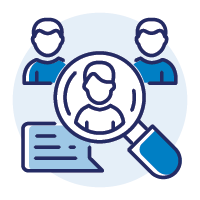
Ease of use and transparency
Simple solutions that are
invisible to the end-user, with minimal intrusions

Centralized policy and local enforcement
Decision-making at the edge
without traffic hairpinning
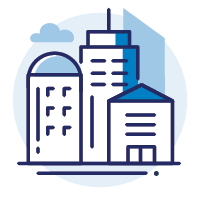
Low operational overhead
Provides the ability to scale
without infrastructure administration
5.
The march
to the cloud
As well as the shift to distributed working, there has been a long transition to the cloud – both of which were accelerated by the pandemic. This move to the cloud, typically a combination of both SaaS and IaaS, is dismantling the traditional perimeter even further.
From document management and CRM to Microsoft Teams and SharePoint, an ever-increasing number of organizations are looking to cloud-delivered software. The march to the cloud is happening at a faster pace in the legal sector than elsewhere. Using data from a survey of more than 750 IT professionals in the UK, US, Australia, Germany and Japan in January 2021, roughly 1 in 20 law firms claim to be entirely operating in the cloud in 2021, more than double the rate of other sectors.
Survey: Share of organizations that operate 100% in the cloud

5%
Legal sector

2%
Other sectors
Only 12% of law firms still have more than three-quarters of core applications hosted on-premise, although less than half (44%) have managed to migrate the majority of their resources to the cloud. While the most innovative law firms lead the way in cloud migration plans, the gap between the laggards and leaders is small in the legal sector than any other – suggesting a close community and shared best practice compared with other verticals. The research also revealed the weighted average value for migrating to the cloud is 49% for law firms, suggesting around half of all infrastructure has been migrated in the typical law firm.
The question being asked among senior figures in the legal sector is whether the objective is to ever reach 100% cloud. Speaking in April 2021, a group of 120 US law firms were asked to share their own progress and plans with the cloud. This data put the transition as slightly further ahead than the study in January, with a full 10% claiming to be operating entirely in the cloud – though the consensus confirms the average progress at about the midway point. Many participants countered the argument that the end goal was to be full-cloud, with several suggesting that the end goal was a hybrid and that they would ‘never be entirely cloud-based’.
Survey: How far along would you describe your cloud journey?
A large component in almost every law firm’s cloud strategy is Microsoft365 (jokingly referred to in the Australian legal sector as Microsoft360 in reference to the frequent outages in 2021). A colossal 94% of law firms claim to be using Microsoft365 solutions, with projects such as Teams rollouts, Intune migrations and standardization on OneDrive all featuring prominently in priorities for 2021 among law firms.
Guidance for Microsoft 365 support
Moving to cloud filesharing like SharePoint
Look to ZTNA, SDP, CASB, SASE and other modern approaches to cloud security. With more data accessible in the cloud and users dispersed across thousands of networks, upgrading your secure access philosophy away from the perimeter is an important component when adopting cloud storage solutions from Microsoft.
Embracing Microsoft Teams
Teams is undoubtedly a new and better way to collaborate with colleagues, especially in a distributed working environment. The challenge in ensuring a successful implementation is that video and audio quality can be unreliable. IT can no longer deliver network quality, given that many employees are in their homes or elsewhere. IT leaders should consider connectivity technology that stabilizes and improves the performance of networks to overcome some of these concerns.
Switching to Intune/Endpoint Manager
There is a compelling financial reason to migrate away from dedicated UEM like VMware or MobileIron to Microsoft’s offering included in M365. For some organizations, however, the functionality of Intune is less complete than with the products already in use – the limited VPN and remote access capabilities are regularly highlighted. Microsoft recommends using integrated dedicated solutions in tandem with Intune to meet those requirements. You can read more about this here.


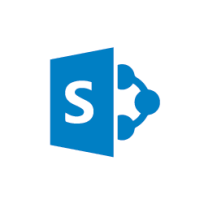

“We’re trying to figure out the best way to migrate from our existing tools like MobileIron and Skype to ensure we’re making the most of our Microsoft 365 licenses”
Senior IT director
New Jersey-based law firm
6.
Case study: Osbourne
Clarke
Osborne Clarke is an award-winning International legal practice, with offices situated around Europe, Asia, and the USA. The firm boasts over 270 partners and more than 900 lawyers in 25 locations. In a short space of time, Osborne Clarke rapidly scaled internationally and enabled all employees through their agile IT strategy and ‘Connected Working Policy’.
Its company-wide digital transformation strategy included enabling a robust work-from-anywhere policy, coupled with a migration to cloud-delivered applications. The plan was to support fee earners traveling, working remotely, commuting, and visiting clients - working from any location as securely and productively as if they were in the office.
In order to implement this ambitious plan Osborne Clarke’s IT team needed deeper visibility into how apps, networks and devices were being used; crucially without needing to backhaul all its traffic to the corporate network. Its existing VPN meant choosing between visibility and security (with tunneling) or a huge blind spot without it. By upgrading to NetMotion, it was able to retain a granular level of visibility and policy control for its growing remote workforce without needing to tunnel traffic. Now, when fee earners attempt to access cloud apps, the IT team can rely on zero trust policies to ensure they stay secure and allow them to access these resources directly without performing complex network gymnastics. This SASE-centric approach means that Osborne Clarke no longer needs to choose between visibility and experience, with traffic routed in the most efficient pathway without having to compromise.
The firm is now able to secure, monitor and control traffic flowing both inside and outside the VPN tunnel. This is helping them transition to the cloud in a flexible manner, as they split more cloud traffic out of the VPN. With increased visibility into distributed workers Osborne Clarke can now proactively and efficiently identify, diagnose and fix issues related to remote working, decreasing the meantime to resolution for support desk teams and reducing downtime for employees.

“We used to support 25 offices globally. With the shift to remote working due to the pandemic, we’re now effectively supporting 2000 offices globally. NetMotion’s offering is the perfect piece for us, as now we know exactly what’s going on. NetMotion instantly gives us real insight into the overall user experience.”
Myles Manning,
Client interface & solutions manager
Osbourne Clarke
7.
What now for
modern law firms?
There’s no doubt that 2020 was a monstrous year for those working in IT, networking or security in the legal sector and 2021 is no different. CIOs and their teams have a lot to think about, including improving the user experience, evolving network security stacks and migrating to the cloud. There is also the huge challenge of determining the return to work strategy. Will employees be expected to work from the office again? If so, how often and at what times? Navigating this complex new arena will be a challenge, and knowledge sharing between firms will be crucial in getting the policy right.
Law firms were asked in April 2021 about their preparations for life after COVID. The prevailing sentiment was that remote working is here to stay, with 35% planning to support remote working indefinitely and 45% considering a hybrid model.
Survey: By the end of 2021, how would you describe the nature of where work is done at your organization?
This flexibility is critical. Law firms overwhelmingly listed flexibility as the most significant factor in determining employee wellbeing, with over a third of law firms losing talent in the first quarter off 2021 alone. Providing an agile workplace is more than just an HR policy – it means providing the tools, technologies and processes that enable seamless working from anywhere. Using modern, innovative software on robust devices is a vital part in any flexible working agenda, meaning the alignment between IT and HR has never been more important.

84%
Believe that flexibility is the single biggest influence on employee happiness at law firms
38%
Of law firms have involuntarily lost quality personnel in the first quarter of 2021
The pathway ahead will be both exciting and difficult for legal IT. Leaders must be prepared for rapid change, embracing scalability and agility across every initiative. NetMotion should be considered to support a variety of projects, including:
• Significantly improving the employee experience for remote workers
• Increasing billable minutes for fee earners
• Upgrading secure access for zero trust and SASE frameworks
• Eliminating network problems and diagnosing remote worker IT issues
• Getting visibility into distributed workforces
To discover how NetMotion may be able to
help your organization, please visit:
https://www.netmotionsoftware.com/lawfirms
Appendix
Thank you to the law firms that participated in the NetMotion webinar series.
Adams and Reese, LLP
Addlesahw Goddard
Akerman LLP
Albertelli Law
Allen & Overy LLP
Allens
Allens LinkLaters
Anthony Collins Solicitors LLP
Appurity
Arthur J. Gallagher AU
Ashurst LLP
ATT Law
AustralianSuper
Avant Mutual
Aware Super
Baker Hostetler LLP
Baker McKenzie
Baker, Donelson, Bearman, Caldwell & Berkowitz, PC
BAL
Ballard Spahr
Barclay Damon LLP
Baskerville Drummond
Bass Berry and Sims
BCLP
Becker & Poliakoff
Bendett & McHugh
Benesch
Berliner Cohen, LLP
Bird & Bird
Blake Morgan LLP
Blanchards Bailey
Blank Rome LLP
BNZ
Bond Schoeneck & King
Bracewell
Bradley Arant Boult Cummings, LLP
Brennan, Manna & Diamond
Bridgeway Security Solutions Ltd
Brownstein
Bulley Davey Limited
Butzel Long , P.C.
Cains
Calcasieu Clerk of Court
Calfee, Halter & Griswold LLP
Cambridge Blue Square Management Ltd
Carpmaels & Ransford LLP
Cisilion
Clarion
Clarke Willmott LLP
Clausen Miller P.C.
Clayton Utz
Clyde & Co
CMC Networks
CMS
Coffin Mew LLP
ContractProbe
Corrs Chambers Westgarth
Cozen O'Connor
Cravath Swaine & Moore LLP
Crowell & Moring
DAS
David
Davis Graham & Stubbs
Dechert LLP
Defence Health
Dentons
Dewitt LLP
DGS
DLA Piper
Duane Morris
DWF LLP
Earthjustice
EBF
Edwards Duthie Shamash
Eimer Stahl LLP
ELTA
Enyo Law
FBD
Finnegan LLP
Fisher & Phillips LLP
Foley & Lardner, LLP
Forsters
Foster Garvey
Fox Rothschild LLP
Fragomens
Freshfields Deringer Bruchhaus
Gateley
Goldberg Segalla
Gordon & Rees, LLP
Gowling WLG UK
GST
Gunderson Dettmer
Hall & Wilcox
Hanna Brophy
Harbottle & Lewis
Harris Beach PLLC
Herbert Smith Freehills
HFW Australia
Hill Ward Henderson
Hinshaw & Culbertson LLP
Hogan Lovells
Holland & Knight
Horwich Farrelly
Howard Kennedy LLP
HSF
Hunton Andrews Kurth
Husch Blackwell
A-H
I-Q
IBB Law LLP
International Legal Technology Association
IO
Irwin Mitchell
ITEC Connect Ltd.
Jackson Kelly
Jackson Lees
Jeremy Hyman Associates
Johnson Winter & Slattery
Jones Day
K&L Gates
Kanner and Pintaluga
Kegler, Brown, Hill & Ritter Co., L.P.A.
Kell, Alterman & Runstein, L.L.P.
Keystone law
King & Wood Mallesons
King and Spalding
Kirkland & Ellis LLP
Kuit Steinart Levy
L.A. Superior Court
Law Society of NSW
Law South Group Limited
Legal Aid Society
Linebarger
Linklaters
Loeb & Loeb LLP
Luther Law
MacFarlanes
Macpherson Kelley
Margolis Edelstein
Matheson
Mayer Brown
McCabe Curwood
McCullough Robertson Lawyers
McDermott Will & Emery
McInnes Wilson Lawyers
Memery Crystal
Messerli Kramer
Michelmores LLP
Milbank LLP
Miles and Stockbridge
Miller & Martin PLLC
Miller Johnson
Mills Oakley
MinterEllison
Travers Smith
Morgan, Lewis, and Bockius
Muckle LLP
NAB
Netrix
North P&I
Norton Rose Fulbright
Nutter McClennen & Fish LLP
Offit Kurman
Ogletree Deakins
Olenick
Orrick, Herrington & Sutcliffe
Osborne Clarke
Parsons Behle & Latimer
Paul Hastings
Paul Weiss
Pinsent Masons
Piper Alderman
PR minds
Preti Flaherty
Qolcom Limited
Quarles & Brady
Quiss Technology
QUMU
Reinhart Boerner Van Deuren
Roythornes Solicitors
RPC Tyche
RTWSA
Rubenstein Law
Russell Kennedy
Sackers LLP
Schnader Harrison Segal & Lewis LLP
Seyfarth Shaw LLP
SG
Shepherd and Wedderburn
Shinewing Australia Pty Ltd
Shook, Hardy & Bacon
Shulman Rogers
Sidley Austin
Simpson Thacher
Skadden Arps
Slater Gordon
Small World Group
SmithAmundsen, LLC
Squire Patton Boggs
Steadfast
Stephenson Harwood LLP
Stoel Rives
Stroock & Stroock & Lavan LLP
Suncorp
Taylor Vinters LLP
Taylor Walton LLP
Taylor Wessing Partnerschaftsgesellschaft mbB
Tharpe & Howell, LLP
Thompson & Knight
Thompson Coe LLP
TNR
Tonkon Torp
Vedder Price
Wachtell, Lipton, Rosen & Katz
Watson Farley & Williams
Weightmans LLP
Weil, Gotshal & Manges LLP
Weirfoulds LLP
Westpac
White & Case LLP
Wilson Sonsini Goodrich & Rosati
Winston
Wolf , Greenfield & Sacks, P.C.
Womble Bond Dickinson
WS
WSGR
Zuckerman Spaeder LLP
R-Z